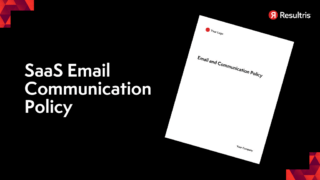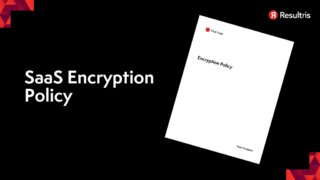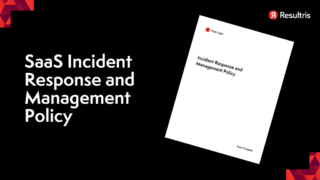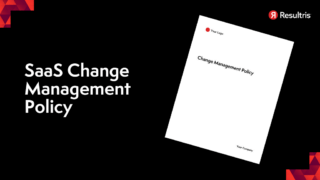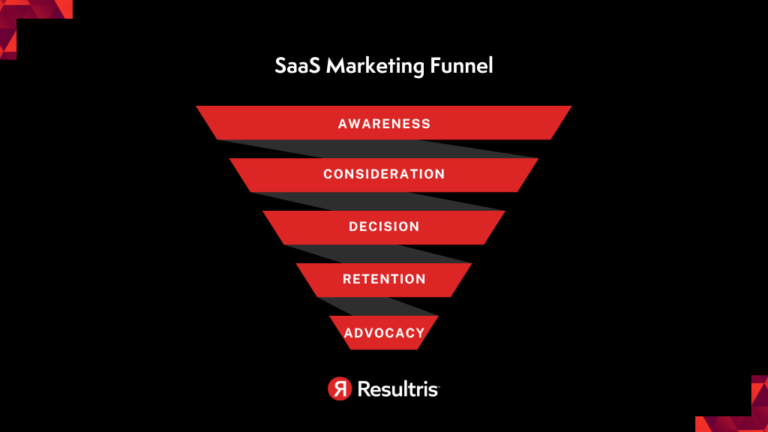
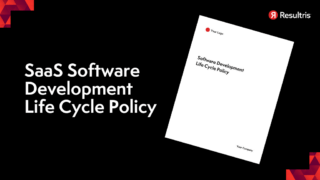
Written by: Tim Eisenhauer
Last updated:

A SaaS marketing funnel is a model that illustrates the theoretical customer journey toward purchasing a software-as-a-service (SaaS) product. It’s divided into five key stages: Awareness, Consideration, Decision, Retention, and Advocacy.
Each stage represents a different phase in a prospective customer’s relationship with a company, starting from the initial discovery of the brand (Awareness), evaluating the product (Consideration), deciding to make a purchase (Decision), and maintaining an ongoing relationship leading to repeat purchases (Retention).
It’s important to note that the SaaS sales funnel often weaves into this marketing process, with the sales team engaging prospects who have shown interest or need further convincing during the Consideration and Decision stages. This demonstrates how these two funnels aren’t mutually exclusive but interconnected pieces of the customer acquisition process.
Once the prospect becomes a customer, the focus shifts from the marketing and sales funnel to the SaaS customer retention funnel. This stage is about nurturing the customer, providing continued value, and turning them into advocates for your brand.
A SaaS marketing funnel is a strategic framework that helps SaaS companies better understand, engage with, and cater to their customers throughout the buying process and beyond.
A SaaS marketing funnel (marketing funnel SaaS) differs from a traditional one primarily due to the business model and customer relationship. With SaaS marketing funnel stages, the focus is on acquiring customers and retaining them and reducing churn, as revenue is generated over time through subscriptions. This requires ongoing engagement and customer success efforts.
On the other hand, a traditional marketing funnel often emphasizes the one-time purchase decision, with less emphasis on long-term customer nurturing. These differences require distinct strategies at each stage of the funnel to cater to SaaS customers’ unique needs and behaviors.
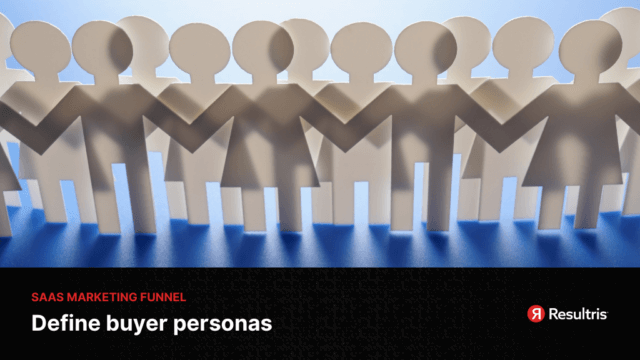
Understanding and defining your SaaS buyer personas is crucial in shaping your SaaS marketing funnel. Buyer personas are semi-fictional representations of your ideal customers, created based on market research and real data about your existing customers. They provide insights into your customers’ needs, challenges, goals, and behaviors, which can inform and refine your marketing strategies.
For a SaaS business, these personas can range from decision-makers like business executives or IT managers to end-users using the software daily. Each persona may have different needs, objections, and decision-making processes. Understanding these personas can help you tailor your SaaS conversion funnel, content, messaging, and sales approach to address their concerns and needs.
Remember, a well-defined buyer persona can guide product development, sales strategies, and customer service, ensuring that all aspects of your SaaS business align with your target audience’s needs. Therefore, defining buyer personas should be a critical step in the initial stages of creating your SaaS content marketing funnel.
Awareness: Build brand visibility using content marketing, SEO, and targeted ads on social media platforms. Reach out to your audience where they are most active and looking for your product.
Consideration: Engage your audience with free trials, demos, case studies, testimonials, and webinars. Highlight the unique value your SaaS solution offers.
Decision: Make your pricing competitive and clear. Use compelling CTAs and streamline the sales process for a smooth customer transition.
Retention: Keep customers engaged with top-notch support, effective onboarding, and regular communication. Their satisfaction is crucial to reducing churn rate.
Advocacy: Encourage satisfied customers to become brand advocates. Implement referral programs, nurture user communities, and showcase customers’ success stories.
Embarking on a deep dive into the SaaS marketing funnel, we’ll dissect each stage meticulously, offering actionable strategies and insights to optimize your SaaS marketing efforts.
Need help with your SaaS marketing funnel? Resultris is a full-service SaaS Marketing Agency. Contact us today.
The journey we’re about to take is discovery, engagement, decision-making, and, ultimately, customer retention.
We’ll address how to attract potential users to your software and convert them into loyal customers who advocate for your brand. Let’s dive deeper into the SaaS funnel stages.
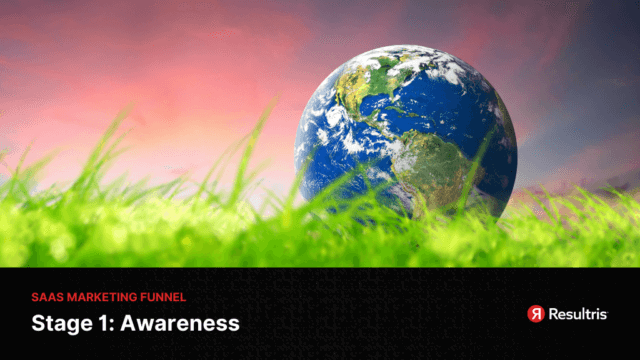
The first stage in the SaaS marketing funnel, awareness, is all about getting your solution out in front of potential customers. It involves identifying where your target market spends their time online and positioning your content there strategically.
Content Marketing is like the Swiss Army knife of awareness-building. It’s a non-negotiable tactic if you want to draw attention to your software.
Your mission, should you choose to accept it, is to put together informative, value-packed content that zeroes in on the challenges your target audience wrestles with. But remember, this isn’t about delivering a sales pitch disguised as advice – it’s about genuinely helping your audience with practical solutions and insights, while subtly showcasing your expertise.
Looking back at our journey, content marketing became our secret weapon, our ace in the hole if you will. The golden goose consistently laid the highest quality and quantity of leads. But let’s be clear, it didn’t happen overnight. This wasn’t a lottery win. It resulted from a significant investment of time, effort, and resources into crafting a library of top-notch, comprehensive blog posts that catered to every corner of our SaaS marketing funnel.
This unwavering commitment to creating standout content ultimately reaped rewards, outshining all other channels and delivering unmatched results.
Takeaways:
Think of blogging as that foundational pillar in your content marketing strategy architecture. It’s more than just a stage for sharing industry snippets and random tips. It’s a strategic platform for delivering valuable insights, potent solutions, and meaty information that directly address your target audience’s dilemmas.
So, every blog post should be a well-constructed answer to the burning questions your potential customers are wrestling with, thus transforming your brand into a beacon of trust and authority in your industry.
Blogging consistently in the SaaS world isn’t just a hobby—it’s a game-changer for lead generation. But we aren’t talking about run-of-the-mill, churned-out posts. No, we’re talking about well-researched, insightful pieces that are laser-focused on the customer.
It’s not a sprint to see how many blogs you can crank out, but rather a careful curation of quality content that informs, engages, and navigates your audience through your SaaS marketing funnel stages.
However, just like a good wine, the fruits of a successful SaaS blogging strategy take time to ripen. It demands a hefty investment of time, resources, and a pinch (or maybe a handful) of creativity. But when it does pay off, the returns are anything but small potatoes—think increased website footfall, heightened engagement, and better quality leads.
Plus, when your blogs are SEO-optimized, they become a formidable tool for climbing up the search engine ranks and pulling in organic traffic. They open the door to zeroing in on specific keywords, earning backlinks, and carving out a robust online footprint.
Over the ebb and flow of time, blogging can metamorphose into a non-negotiable cog in your lead generation and customer acquisition machinery, solidifying its reputation as a worthy long-term investment.
Takeaways:
Imagine SEO as the unassuming, yet vital thread running through the fabric of all your online content, landing pages, and website. It’s all about sprinkling the right keywords in the right places to play nice with search engines and make your pages climb the ranks.
Yes, SEO may seem like a slow burn, but it promises a high return on investment in the long run if done well from the get-go.
Taking a leaf out of our playbook, SEO was no afterthought—it was the backbone, the very skeleton of our lead generation plan. It was akin to planting a sapling that blossomed into a lush tree, heavy with well-qualified leads, once our SEO strategies began to gather steam. And boy, did it underscore the colossal potential and enduring value of a meticulously executed SEO strategy, particularly in the frenetic SaaS universe.
Takeaways:
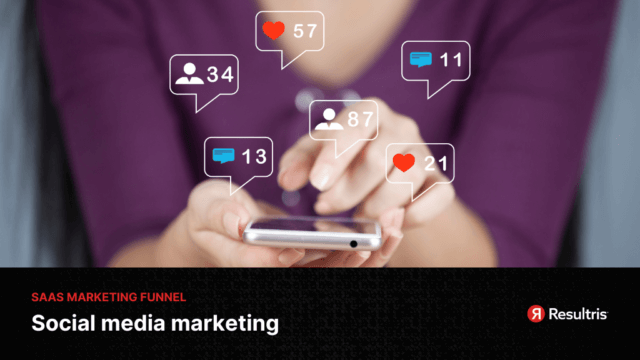
Think of platforms like Google Ads, LinkedIn, Twitter, and Facebook as your custom-built billboards in the digital world, designed to target specific demographics with laser precision. Tapping into pay-per-click (PPC) campaigns can be like turning on a magnet, pulling in a larger crowd and getting your message out far and wide.
But here’s the kicker: PPC can be like a wild horse—unruly and capable of draining your marketing coffers if not reined in properly. Our own rendezvous with PPC was somewhat of a rollercoaster ride. Despite banding together with various ad agencies, turning the PPC tap into a steady stream of qualified leads proved challenging.
However, don’t let our bumpy journey deter you. PPC isn’t a one-size-fits-all hat. Its effectiveness can swing wildly depending on your SaaS solution’s specifics, the precision of your targeting, and the overall quality of your ads.
So, keeping a close watch on your campaigns, crunching those performance metrics, and adjusting your strategies accordingly is the name of the game.
Takeaways:
You can think of software directories like Capterra, Software Advice, Gartner Peer Insights, and G2 as your brand’s expedition team, scouting the vast wilderness of the internet to put your SaaS solution on the map.
They’re a high-priority task on your awareness-building agenda and should be set in motion early in your SaaS marketing funnel journey. These platforms serve a double whammy – they channel high-quality leads your way and boost your SEO game by creating reliable online touchpoints for your brand.
Initially, you may feel like a small fish in a big pond. Your listing might get lost in the crowd, dwarfed by the presence of larger, more established competitors.
But here’s the thing – as you grow your customer base and fulfill their needs, you can nudge them to leave reviews on these sites. These reviews are your golden tickets to visibility and credibility within these platforms, helping you climb the ladder and steal the spotlight over time.
And there’s more. Many of these directories offer a seat at the high-stakes table of PPC or other paid options. We took a shot at it and did score some wins. But the reality is, it’s tough to outbid the big dogs like IBM, Microsoft, Salesforce, and their ilk for the coveted top spots.
But don’t let that discourage you. Even without a top spot, these directories are still a goldmine of opportunity. They serve as a ‘neutral’ stage for customers to share detailed reviews about your product. Believe it or not, that carries much weight in steering potential customers towards your solution.
Takeaways:

Content marketing subscriptions to grow your business.
Need help creating content for your SaaS marketing? Resultris can help you. Over 15 years experience in SaaS.
The path to building awareness for your SaaS can take many routes, and lead purchasing can be one of them. Think of it like a fast-track ticket to loading up your sales pipeline. Whether you view this as part of your outbound sales process or a layer in your SaaS marketing funnel, this tactic offers a shortcut to reaching potential customers and speeding up your sales cycle.
However, a word to the wise – quality matters. It’s crucial to ensure these leads match your target market to see the best results.
Now, let’s dive into our own experience with lead purchasing.
We decided to dip our toes in the water a few times, bringing onboard third-party agencies to comb through LinkedIn Navigator. Their mission was to identify our target customers and then initiate contact through LinkedIn messages. The result? Let’s just say it wasn’t our finest hour. We wound up with half a year of time and money down the drain, but it wasn’t all for nothing. We chalked it up to a learning experience and gained some valuable insights on what not to do.
Next, we ventured into buying lists of potential targets from data sellers – they’re not hard to find. They provided us with a spread of emails targeted based on location, company industry, revenue figures, and more. With lists in hand, we integrated them into an acquisition email marketing platform and began firing off emails. The success rate was low, with most emails missing the mark. But every cloud has a silver lining, and we did manage to squeeze a few promising leads out of the mix.
When done right, lead purchasing can be a powerful tool. But remember, it’s a balancing act. There’s a thin line separating prospecting from spamming, and you want to stay on the right side of it. Of course, you’ll need to do what aligns with your comfort level. Just remember that, like any good strategy, it might take some time to get it right.
Takeaways:
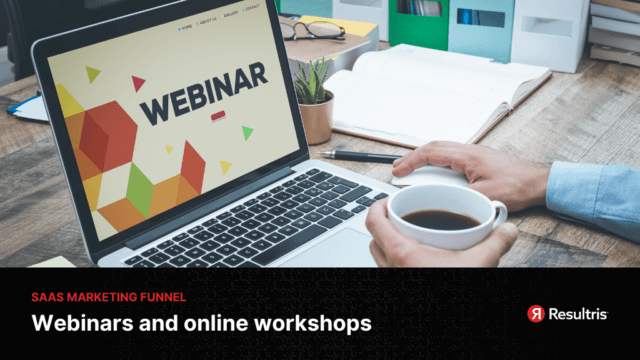
Webinars and online workshops are fantastic ways to pull back the curtain on your software, giving potential customers a detailed look at what it can do. Not only do they provide educational value, but they also give you a chance to showcase your solution in a live, interactive environment.
When planning your webinar, think about the problems your potential customers face and how your software can solve them.
For example, if your SaaS offers accounting solutions, your webinar could focus on solving common accounting challenges.
Takeaways:
Let’s face it, people love visual content. Videos and animations can quickly and efficiently explain what your software does, and how it solves a problem. They’re also incredibly shareable, allowing your message to reach beyond your initial audience.
Consider creating a variety of videos, like explainer videos, product demos and how to’s, and customer testimonials. Each type serves a different purpose in showcasing your product and building trust with potential customers.
Takeaways:
Numbers tell a story, but only if they’re presented in the right way. This is where infographics and data visualization come into play. By presenting data in a visually appealing and easily digestible format, you can illustrate how your software improves outcomes.
For instance, a cybersecurity SaaS might use infographics to show the increase in cyber attacks and how their solution helps mitigate these risks.
Takeaways:
White papers and e-books provide an opportunity for deep dives into industry issues and your software’s role in solving them. By providing in-depth, valuable content, you position your company as a thought leader in your industry.
For example, a cloud storage SaaS could release a white paper on “The Future of Data Storage: Embracing Cloud Solutions”.
Takeaways:
Podcasts and interviews offer a chance to discuss industry topics in an informal, conversational manner. They’re a great way to spread the word about your software while also building credibility with your target audience.
Consider inviting industry experts to discuss relevant topics, subtly weaving in mentions of your software when appropriate.
Takeaways:
Guest posting is essentially borrowing someone else’s audience to spread awareness about your software. By publishing on established platforms in your industry, you can tap into a wider audience and boost your credibility.
Consider offering unique insights or new perspectives on relevant industry topics.
Takeaways:
PR and media outreach are all about getting your software featured in the press. This could mean being included in industry roundups, having a feature article written about your software, or simply getting a mention in a relevant piece.
Takeaways:
Influencer marketing involves partnering with influential people in your industry to get your software in front of their followers. Their endorsement can significantly boost your software’s credibility and visibility.
Takeaways:
Sponsored content is like a stealthy billboard. It’s a way to get your software in front of new eyes on platforms they already trust. And because it blends into the regular content on these platforms, it doesn’t come off as overly promotional.
Takeaways:
You can double your marketing reach by partnering with a non-competitive company targeting a similar audience. It’s a win-win situation – you get exposure to their audience, and they get exposure to yours.
Takeaways:
Remember, the most important part of this stage is to provide value, educate your audience about your offering, and build credibility and trust. By employing a mix of these strategies, you can effectively amplify your brand’s visibility and attract more prospective customers to your SaaS solution.
Let Resultris help! Our expert team can simplify the process and guide your path to an effective SaaS marketing funnel.
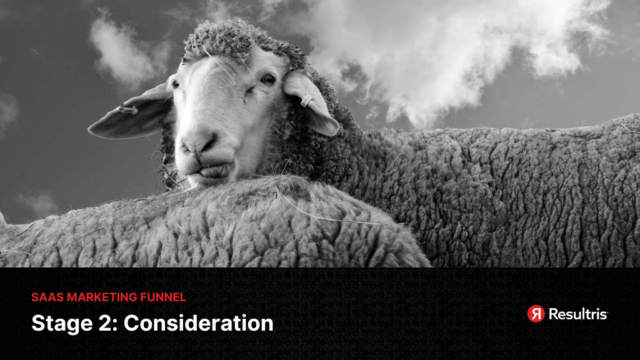
In the consideration phase, your prospective customers are comparing different software solutions. Your goal is to demonstrate how your SaaS solution is superior to alternatives.
Start with a simple ebook answering top-of-the-funnel questions that prospects typically have. Include promotional materials for your software, testimonials, social proof, and a high-level overview of the onboarding process.
While technical whitepapers can be highly effective for some SaaS companies, they may not always hit the mark due to their length and depth.
In our experience, reformatting the whitepapers into more digestible ebooks led to better engagement. Ebooks offer a perfect balance of value provision and product promotion.
Case studies and testimonials can be powerful tools to establish credibility, provide social proof, and close deals. However, securing them from customers can be a challenge. It requires a dedicated approach and should be integrated into your process.
Strive to acquire endorsements where you can use your customers’ names and logos; they hold more weight. Anonymized case studies, while useful, don’t carry as much social proof.
Keep in mind that customer approval is critical. We often spent hours discussing with customers, only to have higher-ups deny permission to use their names and logos.
Regardless of the hurdles, strive to gather as many diverse case studies as possible, across various customer segments. Prospects don’t just want their issues solved; they want to see evidence of your experience in resolving similar customer problems.
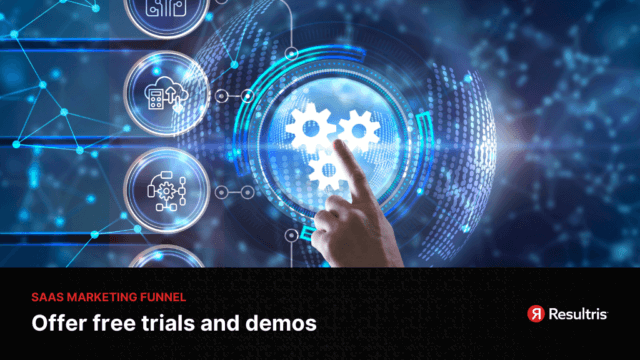
Offering a free trial or demo of your product gives prospects a taste of your product’s capabilities and an initial glimpse into the onboarding process. The approach to this depends largely on the complexity of your software.
If your SaaS product is simple enough for prospects to start using immediately, consider allowing direct signups for trials. However, make sure you invest in creating effective onboarding materials that help users realize the value of your product as quickly as possible. A series of tutorial videos or in-app walkthroughs can be helpful.
Conversely, if your software is more complex, like an enterprise platform, an unguided free trial may overwhelm and deter prospects. In such cases, offering personalized demos during the sales process is better.
Understanding your prospects’ pain points thoroughly beforehand is essential so you can tailor your demos to showcase how your software addresses those specific challenges. This approach keeps the demo focused and relatable, making it a powerful tool for illustrating your product’s unique value proposition. Remember, a smooth and intuitive trial or demo experience is a significant step toward converting prospects into paying customers.
Hosting webinars can effectively showcase your SaaS solution in action and provide a platform to address any questions or concerns potential customers might have. However, the effectiveness of webinars heavily depends on your existing audience base.
Webinars can be an excellent tool if you have substantial traffic to your website, a growing list of prospects, an engaged customer base, active social media accounts, or a substantial email list to promote the event. In the early stages of our company, we found that webinars were more beneficial for our existing customers than attracting new prospects. They served as an excellent platform for deepening our relationship with our users, educating them about new features, and driving user engagement.
Regardless, it’s a good practice to record these webinars and include them in a media or resources section on your website, making them available for on-demand viewing. This way, anyone interested in your solution can access these resources at their convenience.
Crafting an engaging webinar is an art in itself. Planning the content, ensuring it’s engaging, and delivering it in a way that holds your audience’s interest is critical. A dull webinar can have the opposite effect and deter potential customers. Thus, investing time in honing your webinar presentation skills can pay off significantly in the long run.
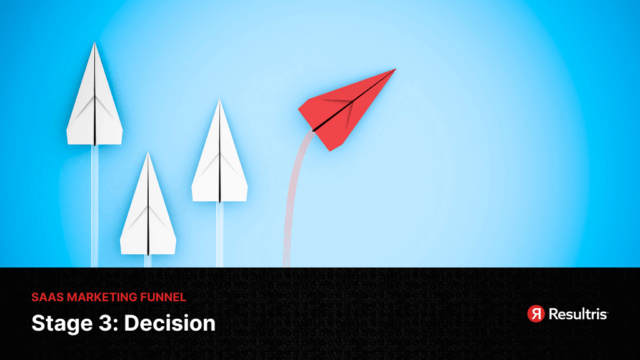
The decision stage in your SaaS marketing funnel is when your prospect is on the brink of becoming a customer. It’s crucial that you continue to provide assurance and incentivize them to choose your solution.
Targeted follow-up emails: Potential customers have shown significant interest in your product. Personalized follow-up emails can nurture their interest, provide additional information, address potential reservations, and move them toward conversion. YOU CAN AUTOMATE THESE EMAILS using CRM or email marketing software, yet maintain a personalized touch by including their name or references to their industry or role.
Sales team engagement: Prospects who have reached the decision stage are prime for direct sales engagement. Your sales team should be trained to understand the specific needs of your leads and demonstrate how your product meets those needs. Use consultative selling techniques, in which you listen to your prospects’ challenges and recommend solutions rather than pushing a hard sell.
Live chat support: Offering real-time, live chat support can answer any last-minute questions or concerns a prospect may have. This immediate support can increase trust and make the prospect feel more confident about their decision.
Customer success stories & ROI reports: Showcase case studies and reports highlighting the benefits and ROI your existing customers have achieved. Tangible results can often be the convincing factor a prospect needs to decide.
Negotiations & customized solutions: Depending on the complexity and price of your SaaS product, negotiations could be part of the decision process. Be open to discussing pricing options, add-ons, or bespoke features that could encourage conversion. However, maintain your product’s value and avoid unsustainable discounts or promises.
Money-back guarantees: Offering a guarantee can alleviate risk and help close the deal. This shows confidence in your product’s capabilities and demonstrates that you value customer satisfaction.
Remember, during the Decision stage, your goal is to give the prospect every reason to say yes, while removing any hurdles that might make them say no. By focusing on demonstrating the value of your product and providing excellent customer service, you’ll be well on your way to converting your prospects into customers.
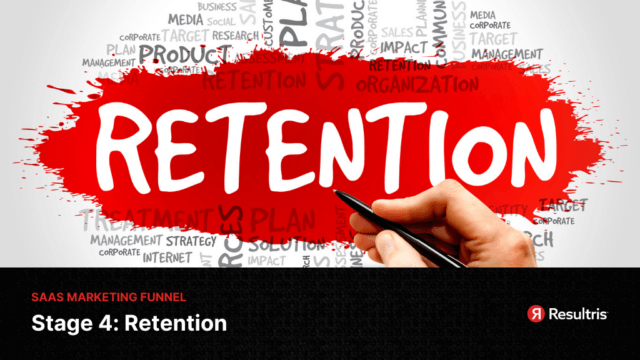
The final SaaS marketing funnel stage, retention, involves keeping your customers satisfied and engaged, reducing churn and developing brand loyalty.
Remember, acquiring a new customer can be far more costly than retaining an existing one, so investing in customer retention strategies is critical for the overall success of your SaaS business.
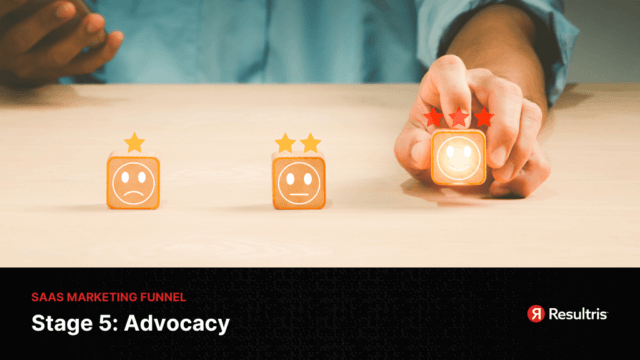
While not always considered a part of the SaaS marketing funnel, advocacy is an organic result of successful retention strategies. Satisfied customers become ambassadors for your brand, bringing in new potential customers.
Remember, word of mouth is a powerful tool in marketing. Happy customers who share their experiences can help attract new potential customers. Advocacy doesn’t just happen; it results from consistent effort and nurturing relationships with your customers.
And there you have a detailed roadmap to navigating your SaaS marketing funnel!
This journey isn’t linear, but a continuous loop of attracting, engaging, and retaining customers while constantly fine-tuning your strategies based on insights and feedback.
In the SaaS world, there’s always room for growth and improvement. Optimizing your SaaS funnel stages requires a strategic and customer-centric approach. Here’s a step-by-step guide to ensure your SaaS marketing funnel delivers results:
Understand Your Customer: Before anything, define your ideal customer profile (ICP). This understanding will dictate the kind of content, campaigns, and offers you’ll design.
Optimize the Top of the Funnel (ToFU):
Enhance the Middle of the Funnel (MoFU):
Refine the Bottom of the Funnel (BoFU):
Feedback Loop: Continuously gather feedback from customers and users. This helps in refining your SaaS marketing funnel, product, and marketing strategies.
Testing and Iteration: Use A/B testing to understand what’s working and what’s not. Regularly iterate your funnel based on the results to improve conversions.
Tracking the effectiveness of your SaaS marketing funnel stages is paramount to its optimization. Here are some critical metrics you should monitor:
Traffic and Lead Generation Metrics:
Conversion Rates:
Engagement Metrics:
Retention and Churn Metrics:
Customer Lifetime Value (LTV): The average revenue a single customer is predicted to generate throughout their relationship with your company.
Customer Acquisition Cost (CAC): Total cost of acquiring a new customer, including all marketing and sales expenses.
LTV to CAC Ratio: This metric provides insight into the return on investment for acquiring new customers. An LTV:CAC ratio greater than 3:1 is typically considered healthy.
Net Promoter Score (NPS): Measures customer loyalty and satisfaction. A higher score indicates happier customers are more likely to refer others.
Consistently monitoring these metrics will provide a clear picture of the health and effectiveness of your SaaS marketing funnel. Adjust your strategies based on these insights to continuously optimize for better results.

